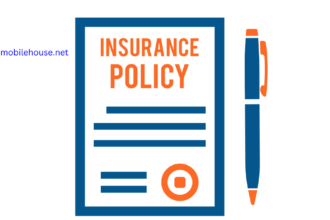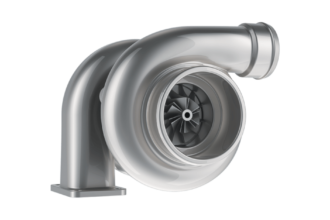How Much Does It Cost to Charge a Tesla Battery?
July 14, 2024 – Charging a Tesla battery is a common question among electric vehicle (EV) owners and potential buyers. As more people consider switching to electric cars, understanding the costs associated with charging is crucial. On July 10, 2024, Tesla released updated information on charging costs, helping drivers better plan their expenses.
Overview
Tesla cars are popular for their innovative technology and environmental benefits. One of the main advantages of owning a Tesla is the reduced cost of fueling compared to gasoline cars. However, the cost to charge a Tesla battery can vary based on several factors. These factors include where you charge, the model of your Tesla, and local electricity rates.
Charging at Home
Charging a Tesla at home is the most convenient and often the most cost-effective option. To calculate the cost, you need to know your local electricity rate, measured in kilowatt-hours (kWh), and your Tesla’s battery capacity.
For example, the average electricity rate in the United States is about $0.13 per kWh. The Tesla Model 3 Long Range has a battery capacity of 75 kWh. To fully charge this battery at home, the cost would be:
75 kWh x $0.13/kWh = $9.75
This calculation gives a rough estimate. The actual cost can vary slightly based on your specific electricity rate and any additional fees.
Charging at Superchargers
Tesla’s Supercharger network offers fast charging for drivers on the go. Superchargers are more expensive than home charging but provide convenience and speed. The cost at Superchargers can vary by location and can be higher during peak hours.
As of July 2024, the average cost at a Supercharger in the United States is around $0.28 per kWh. Using the same Tesla Model 3 Long Range example:
75 kWh x $0.28/kWh = $21.00
Superchargers are ideal for long trips or when you need a quick charge. However, for regular daily charging, home charging is usually more economical.
Public Charging Stations
Public charging stations are another option. These stations can be found in parking lots, shopping centers, and workplaces. Costs at public stations can vary widely. Some are free, while others charge similar rates to Superchargers.
It’s essential to check the rates and availability of public charging stations in your area. Apps and websites can help you locate and compare prices of nearby charging stations.
Charging Efficiency
It’s important to note that not all the electricity used for charging goes into the battery. Some energy is lost during the charging process due to inefficiencies. This loss can be around 10-15%, meaning the actual cost might be slightly higher than calculated.
For a more accurate estimate, you can account for these losses. For instance, if you assume a 10% loss, the adjusted cost for home charging the Tesla Model 3 Long Range would be:
$9.75 / 0.90 = $10.83
Comparing Costs to Gasoline Cars
To put the charging costs in perspective, it’s helpful to compare them to the fuel costs of a traditional gasoline car. A gasoline car that gets 25 miles per gallon and drives 250 miles would use 10 gallons of gas. At an average gas price of $3.50 per gallon, the cost would be:
10 gallons x $3.50/gallon = $35.00
In comparison, charging a Tesla for the same 250 miles (assuming a range of 250 miles per charge for the Model 3) at home costs around $10.83. This highlights the significant savings on fuel costs with an electric vehicle.
Other Considerations
When considering the cost of charging a Tesla, it’s also essential to think about other factors. These include the installation cost of a home charger, potential maintenance costs, and any local incentives or rebates for EV owners.
Installing a home charging station can cost between $500 and $1,500, depending on the equipment and electrical work required. However, many regions offer rebates and incentives to offset these costs, making it more affordable.
FAQ
Q: How much does it cost to charge a Tesla at home?
A: The cost depends on your local electricity rate. On average, it’s about $0.13 per kWh in the United States.
Q: How much does it cost to charge a Tesla at a Supercharger?
A: The average cost at a Supercharger in the United States is around $0.28 per kWh.
Q: Are there any free charging options?
A: Yes, some public charging stations offer free charging. However, availability varies by location.
Q: What factors affect the cost of charging a Tesla?
A: Factors include where you charge, your Tesla model, local electricity rates, and charging efficiency.
Q: How does the cost of charging compare to fueling a gasoline car?
A: Charging a Tesla is generally cheaper than fueling a gasoline car. For example, charging a Tesla Model 3 for 250 miles costs around $10.83, while fueling a gasoline car for the same distance costs about $35.00.
Q: Are there incentives for installing a home charger?
A: Yes, many regions offer rebates and incentives to reduce the cost of installing a home charging station.
Understanding the costs of charging a Tesla battery helps drivers make informed decisions. Whether charging at home, at a Supercharger, or at a public station, Tesla owners can enjoy the benefits of lower fuel costs and contribute to a greener future.






I’m definitely going to implement these tips.
This article is a fantastic resource. Your detailed explanations and practical advice are greatly appreciated.
Hello! Do you know if they make any plugins to help with Search Engine Optimization? I’m trying
to get my website to rank for some targeted keywords but
I’m not seeing very good success. If you know of any please share.
Many thanks! I saw similar blog here: Eco blankets
However since a single practice monitor can carry the identical amount of individuals as a ten lane freeway (and at a fraction of the cost), high velocity trains might assist relieve some of that traffic jam angst.
Sugar defender For years, I have actually
fought unpredictable blood sugar swings that left me feeling drained pipes
and sluggish. But since incorporating Sugar my power degrees are
now secure and consistent, and I no more strike a wall in the afternoons.
I value that it’s a gentle, natural technique that does not included any type of undesirable negative
effects. It’s truly transformed my every day life.